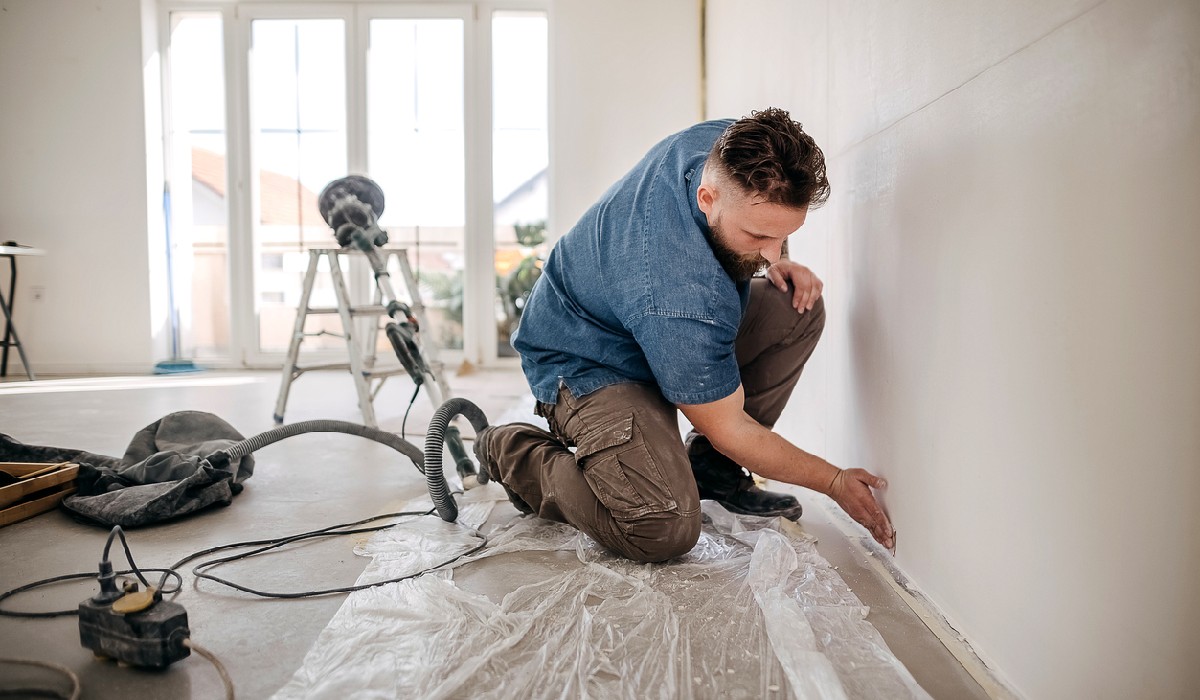How to Repair Drywall: An Easy Step-by-Step Guide

Drywall repair can be a tricky job, especially if you don’t know what you’re doing. With a few simple steps, you can easily repair your drywall and make it look brand new again. In this article, we’ll provide a step-by-step guide on how to repair drywall. We’ll also provide some helpful tips and tricks that will make the repair process easier and ensure the job is done right. Whether you’re a DIY beginner or a pro, you’ll be able to handle this project with relative ease. So, let’s get started and get your walls looking better than ever.
Supplies Needed
Safety Equipment
Safety equipment is the priority when tackling any home improvement project. Safety glasses, gloves, and a dust mask are important to protect your eyes, hands, and lungs from any dust that gets stirred up during the process.
Drywall Tools
For this project, you’ll need a few specialized tools such as a drywall saw, utility knife, putty knife, taping knife, and hammer. In addition to your tools, you’ll need the materials to make the repairs. Sheetrock is the most common type of drywall and comes in standard sizes. You will also need screws or nails appropriate for your wall type and joint compound for taping the seams and filling any imperfections in the wall before it is painted.
Preparing the Area
Removing Old Drywall
If installing new drywall is necessary, you will want to remove the existing drywall first. Use your utility knife to fill any existing seams, then use a pry bar or hammer to remove large sheets of drywall. Be sure to wear safety gear while doing this.
Preparing the Surface
Once all of the existing drywall has been removed, you are ready to prepare the surface for the installation of new drywall. Make sure the area is free of dirt, dust, and other debris before moving forward. This step can easily be done with a shop vac or damp cloth. Make sure that all of your walls are level and secure so that they remain stable throughout the installation of your new sheetrock.
Cutting and Installing the New Drywall
Measuring the Area
Before cutting any new pieces, you will want to measure carefully to determine how much new sheetrock you will need for each section of your project. Once you have measured out how much sheetrock you will need, mark each piece clearly on its face with a pencil before cutting it down for installation.
Cutting the Metal Studs
If installed, metal studs should be cut with an angle grinder before installing new sheetrock sections over them. This will ensure they fit snugly into place once installed.
Cutting the Drywall
Using a drywall saw, make precise cuts on each piece. Be sure not to overcut, as this could lead to extra work when filling in the seams with the joint compound later.
Installing Drywall
Once all of the pieces have been accurately measured out and cut down, begin securing them into place using either nails or screws. Using an electric screwdriver will make this process much easier. Make sure all pieces are secured tightly before moving on to the finishing touches.
Securing the New Drywall
Use screws to nail down your drywall before applying the joint compound to the seams. Use sandpaper to smooth out any uneven areas or bumps along the tape seam and then remove any excess dust or particles from the area.
Finishing Touches
The last step in your drywall repair job is to finish it off with some finishing touches. Use a wet sponge or trowel to smooth out all of the remaining joint compound, and then let it completely dry before continuing. Once everything is completely dried, you can add texture by using a drywall texture tool or spray cans of texture applied with an air compressor. To give your new patch area a uniform look, use a roller brush or paintbrush to paint over your newly repaired area with a coat of paint.
Conclusion
By following these simple steps you will have your drywall job completed in no time. With a little patience and practice, you’ll find that repairing drywall can be quite easy and rewarding. Once you’re done, all that’s left to do is enjoy your newly transformed space.